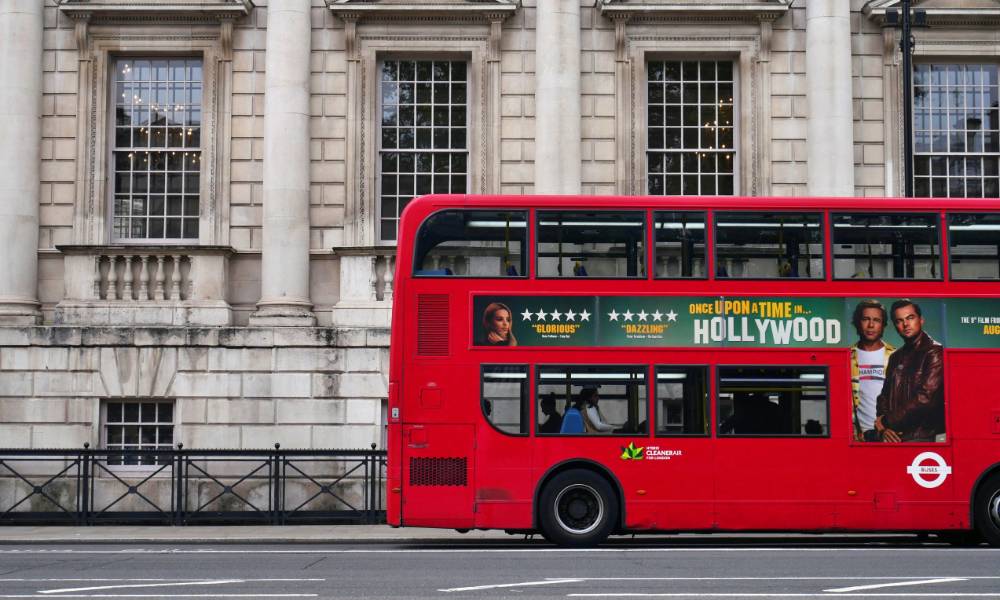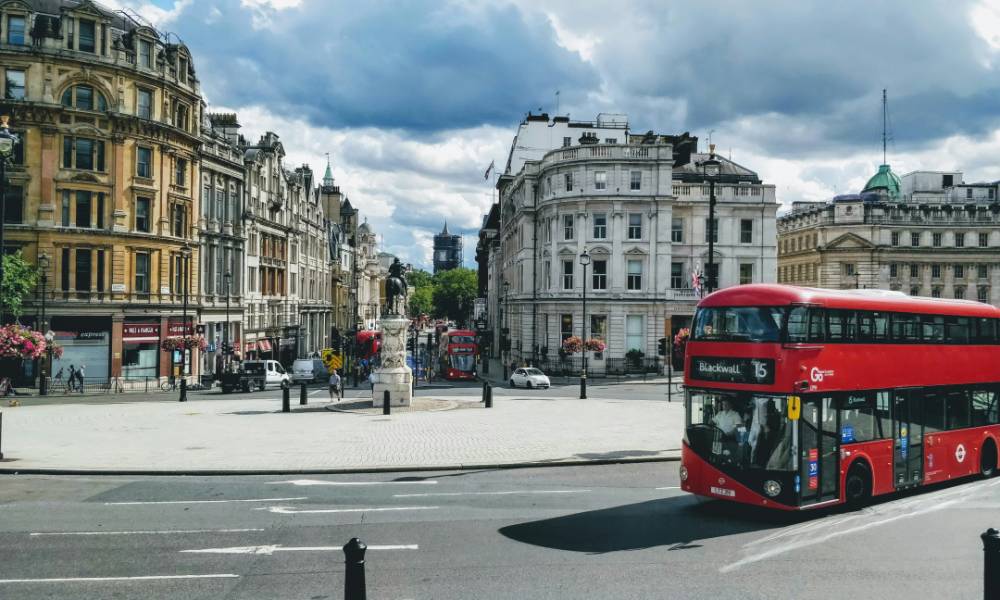Transport for London (TfL) has been investing in greener, more sustainable transport solutions to tackle air pollution and reduce carbon emissions. A key element in this initiative is the introduction of electric buses, which have started appearing alongside the traditional red diesel-powered double-decker buses.
Evolution of the London Bus Fleet
As London continues its journey towards cleaner air and a more sustainable public transport system, you’ll observe a significant reformation of its iconic bus fleet.
Transition to Zero-Emission Buses
London strives to meet air quality and carbon emission targets by transforming the traditional fleet into a zero-emission bus fleet. Transport for London (TfL) targets having all buses in central London be zero-emission by 2030, and across the entire city by 2040. This includes introducing electric buses and hydrogen fuel cell buses to replace the existing diesel buses. You will find that emissions from the bus fleet, such as nitrogen oxide (NOx) and particulate matter, are major contributors to air pollution. The adoption of lower-emission technologies is a key measure towards improving air quality.
Technological Advancements and Infrastructure
With the evolution of the London bus fleet, technological advancements play a pivotal role. To support the new fleet of electric and hydrogen buses, you’ll notice enhanced infrastructure, such as dedicated bus charging facilities. Electric bus fleets require a network of charging points, and these are being installed across the city. For instance, route 63 has been fitted with bus charging equipment to maintain the service of electric buses. Moreover, customer features on buses, like mobile phone holders and USB charging points, contribute to an improved travel experience.

Policy, Leadership, and Vision
The city’s leadership, including the Mayor of London, Sadiq Khan, and TfL’s Surface Transport Managing Director, Louise Cheeseman, have been crucial proponents of the bus fleet’s evolution. They’ve established policies and proposed visions for a sustainable transportation future.
- The introduction of the Ultra Low Emission Zone (ULEZ) has accelerated the move away from diesel vehicles.
- Progress is also fuelled by strategic plans like the Bus Action Plan, which links the transformation of the bus network with the creation of green jobs and the improvement of outer London town centres through new ‘Superloop’ and express bus routes.
These strategic moves support the overarching goal of decarbonising public transport, align with global climate actions like those pledged at COP26, and dedicate London’s efforts through the pandemic recovery and beyond.
Advancing Public Transport Efficiency and Accessibility
In an effort to enhance the transit system, Transport for London (TfL) is driving forwards with the electrification of the iconic red bus fleet, intertwining customer convenience with a steadfast commitment to environmental betterment.
Improving Customer Experience and Safety
Your journey across the capital is becoming safer and more enjoyable. Electric buses on London routes are increasingly equipped with CCTV, charging points for mobile phones, and bus safety standard enhancements such as clear screens to protect against driver assaults—ensuring a higher standard of passenger comfort and safety. Meanwhile, Metroline’s introduction of electric double deck buses contributes to a smoother ride with lower noise and vibration levels.
Economical and Environmental Implications
Your commute by bus is now not only more efficient but also kinder to the environment. The electrification of the bus fleet is pivotal for reducing carbon emissions and air quality concerns, with TfL targeting a net-zero emission fleet by 2037. Electric buses do not emit nitrogen oxide or carbon dioxide, challenging air pollutants prevalent in diesel engines. Furthermore, the push for electric buses is fostering green manufacturing jobs, with a significant part of the fleet being manufactured in the UK, bolstering both the economy and efforts to decarbonise public transport.
Comparative Global Perspectives
Local strides in bus electrification are echoed in international efforts, with a cross-pollination of ideas seen among global cities. For example, New York, Paris, and Vancouver have taken cues from London’s move towards electric buses, recognising the role of hydrogen buses in achieving their respective green targets. The London model serves as a blueprint, showcasing how dense urban areas can revolutionise public transport and combat climate emergency through policies like Low Emission Bus Zones and the creation of Superloop express bus routes to connect outer London town centres efficiently.

Frequently Asked Questions
What proportion of London buses are powered by electricity?
As of the latest figures, a growing percentage of London’s bus fleet is electric, with plans to increase this number as part of efforts to reduce carbon emissions and improve air quality in the capital.
Which manufacturers supply electric buses for the London fleet?
Manufacturers such as BYD, Alexander Dennis Limited, and Wrightbus are key suppliers of London’s electric buses. These companies specialise in delivering vehicles that meet the specific requirements of London’s transport network.
How are electric buses in London charged?
Electric buses in London are typically charged overnight at depots equipped with the necessary charging infrastructure. Some routes also utilise opportunity charging via pantographs at selected terminals to maintain battery levels throughout the day.
What are the operational routes for electric buses in London?
Electric buses in London serve several routes, with a focus on central London to maximise environmental benefits. These routes are continually expanding as more electric buses are introduced into service.
Have there been any incidents involving electric buses in London?
Incidents involving electric buses in London have been rare and are thoroughly investigated to ensure the highest safety standards are maintained as the technology is rolled out across the fleet.
Do electric buses in London also use hydrogen fuel cells?
London has introduced hydrogen fuel cell buses on specific routes, complementing the electric bus fleet. These fuel cell buses produce electricity on board through a chemical reaction, offering another zero-emission transport solution.








